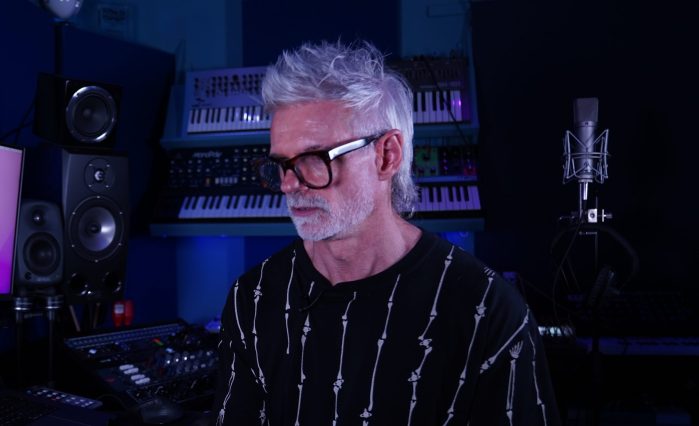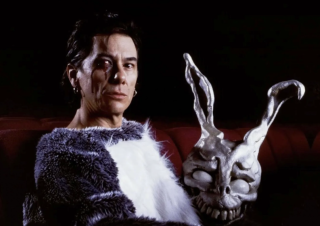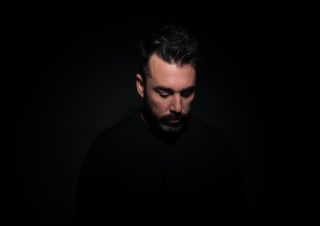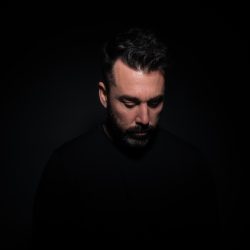RAZE.D is the newly established persona and moniker of UK-based multi-modal extraordinaire D.Ramirez. With over 30 years experience in the music industry, producing chart-topping tracks and remixes for the dancefloor, D. Ramirez has triumphantly made his mark on the club scene.
Now as RAZE.D, he has embarked on a new venture which has plunged him out of his comfort zone, to create music that’s intentional and thought-provoking. His debut offering as RAZE.D is a 10-track album aptly titled Angry Silhouette, which dives into poignant themes of social media addiction, self-worth, the influence of tech giants and more. The album, which dropped on 24 January via Dreamwave, is deeply personal for RAZE.D, as he showcases his authenticity, as well as his singer-songwriter, production and mixing skills like never before.
In our exclusive interview with the electronic music luminary, he discusses his artistic approach, current hardware setup, the power of experimentation and more!
Stream Angry Silhouette while reading the interview below:
Describe a pivotal music moment for you in your favourite film, television show, brand partnership etc. Has this influenced any of your own compositions?
I feel lucky to have grown up in the ’80s — it was a golden era for synth-driven soundtracks. Vangelis’ Blade Runner score was a game-changer for me: rich, emotional, and futuristic. I was also obsessed with John Carpenter — his minimalist synth scores gave his films a raw, moody edge that still inspires me.
But the one that really shaped my musical DNA was Giorgio Moroder’s Midnight Express. The theme was haunting, but Chase — that relentless arpeggiated pulse — was pure magic. It still sounds timeless today.
More recently, I felt a similar spark from Drive. Kavinsky’s Nightcall is a clear homage to that era, with its dark, cinematic synth textures. It’s proof that those classic sounds still resonate — and continue to inspire a whole new generation of artists.
What first drew you to making Synthpop?
What drew me to synth-pop was the emotion and innovation packed into what, on the surface, were very minimal productions. Bands like Kraftwerk opened the door — their music felt alien and futuristic, yet strangely soulful in its precision. Then came Depeche Mode and Yazoo, and that’s when it really hit home for me. Yazoo in particular had this raw, emotional power — Vince Clarke’s synth work was so clean and melodic, while Alison Moyet’s vocals brought this deep, human contrast. It was the perfect blend of machine and soul.
Synth-pop felt like a rebellion against rock’s excesses — it was forward-thinking, stylish, and sonically fresh. And growing up in that era, with access to emerging tech and new sounds, it felt like the soundtrack to the future. It still does, really.
What does your current software/hardware setup currently consist of?
I’ve been collecting synthesizers for nearly 40 years, so you can imagine the collection I’ve built over time. Some of the standout pieces in my setup include the Roland SH-101, Korg MS-20, Prophet-6, OB-6, Juno-106, Arturia Polybrute, Roland SH-5, ARP Odyssey, Korg Mono/Poly, and various Nord models (2 and 3). I also have a Moog Voyager, Moog Matriarch, and Moog Sub37, along with a sizable modular setup that continues to expand.
On the effects side, I have quite an extensive guitar pedal collection, featuring the Meris LVX, Meris Mercury X, Hologram Microcosm, Strymon Big Sky, Deco, Chase Bliss Mood MKII, and Chase Bliss Forward, among others.
All of these instruments are integrated and controlled via Ableton Live, which of course covers synth duties with VSTs as well. But when it comes to creating, I still prefer the tactile feel and hands-on control of real hardware synths. For mixing, I rely on Logic Pro to bring everything together.
Who are your biggest influences, both inside and outside of the genre?
When it comes to my biggest influences, Depeche Mode stands out as a major force, both within and outside of the synth-pop genre. Their ability to blend dark, emotive themes with electronic music was groundbreaking, and it continues to shape my work today. Their sound is the perfect balance of synthetic and organic, and their use of tension and atmosphere is something I really admire.
Outside of electronic music, I draw inspiration from a wide range of genres and artists. The Smiths, for example, have had a significant impact on me — their melancholic yet powerful songwriting and the way they blend emotion with sound is something I relate to deeply. I also take influence from cinematic composers like Vangelis, whose Blade Runner soundtrack is an absolute touchstone for me. These artists, both within and outside of the electronic music world, shape the way I think about sound, production, and the emotional journey of a track.
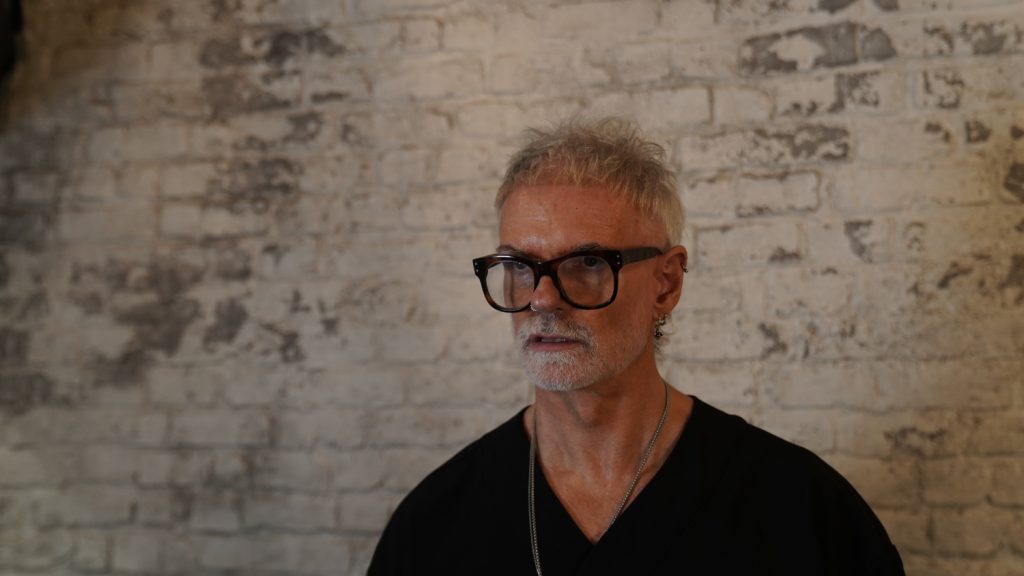
When you sit down to create, what’s the first thing that sparks the process? A melody? A feeling? A memory?
I’ve found that the best results come when I sit down with zero preconceptions of what I’m going to create and simply let the process flow. I don’t force myself to achieve anything specific; instead, I focus on planting the seed of an idea, which could either blossom into a full track or lead me to the next one. After years of absorbing music, I’ve realized that it’s all inside of me — I just have to allow it to come to the surface.
This often stems from experimentation. Whether I’m exploring a new piece of gear, trying out a fresh technique, playing with a sound I like, or running a synth through one of my pedals to see what happens, anything can spark that initial idea. Once it clicks, I’m off. For me, songwriting is all about the emotion that one of these sparks evokes — that’s where the track truly begins.
Do you have any personal rituals or habits when writing or producing, things that get you in the right headspace? (e.g., late-night drives, dim lighting, a specific synth always within reach)
I don’t have any rigid rituals, but I do find that certain things help get me into the right headspace. I tend to work best when the environment is calm and free from distractions, so dim lighting or working late at night can often set the mood for me. There’s something about that time when the world quiets down that allows my mind to focus on the music.
I also find comfort in having a few specific pieces of gear close at hand — my ARP Odyssey or Moog Voyager are often within reach, as they always inspire new ideas. Sometimes, I’ll just start playing with a synth, not with any specific goal in mind, and that’s when the best moments happen. I also enjoy experimenting with my pedal setup, as the unpredictability of how a synth will interact with a pedal can spark something unexpected and exciting.
Ultimately, it’s about finding a space where I can experiment freely and let ideas flow without pressure. That’s when the magic happens.
Angry Silhouette marks a striking departure from your club-driven sound. What was the catalyst for this shift towards a more introspective, synth-laden direction?
The shift towards a more introspective, synth-driven direction with Angry Silhouette came from a desire to explore deeper emotions beyond the club sound I’d been known for. I’ve always wanted to experiment with singing and songwriting — in school, I was in bands as both a singer and keyboard player — and this album allowed me to return to that organic side of music. Synths offered a perfect way to express that emotional depth.
The album also includes a social commentary on the world around us, reflecting on the struggles, chaos, and resilience we face in today’s society. It’s less about the energy of the club and more about creating a mood and telling a story through sound. This shift felt like a natural, necessary step in my artistic journey.

The album has an incredibly personal touch, with you handling everything from songwriting to production. What was the most challenging part of bringing this deeply individual vision to life?
The most challenging part of bringing such a deeply personal vision to life was the weight of handling everything myself, from songwriting to production. When you’re pouring your own emotions and thoughts into every aspect of a project, there’s a constant internal dialogue about whether you’re capturing the right feeling, whether it’s raw enough, or if it’s too much. There were times when I had to step back and remind myself to trust the process and let the music guide me.
Another challenge was maintaining a balance between my artistic freedom and the need for objectivity. It’s easy to get lost in the small details when you’re so close to the work. It was important to step away from it occasionally to get a fresh perspective, ensuring the album kept its integrity while still evolving in the right direction.
Overall, though, the process was incredibly rewarding. There’s a certain power in fully owning your work, and despite the challenges, it made the end result feel even more meaningful.
This is the first time you’ve really centered your own vocals. What was that experience like, and how did it change your approach to making music?
Focusing on my own vocals for the first time was both exciting and intimidating. As someone who’s primarily worked with instrumental music, it felt like a huge leap to step into a more vulnerable, personal space. There’s a certain rawness to singing your own words — it forces you to be incredibly honest with yourself, and that can be a bit daunting. But at the same time, it was liberating. It allowed me to connect with the music on a deeper level and express emotions in a way that purely instrumental tracks hadn’t allowed.
This shift also changed my approach to making music. I had to rethink how I structured tracks, how I layered sounds, and how the vocals would interact with the instruments. I wanted the vocals to be a key element, not just another layer. That meant adjusting everything around them, from the way I approached melody and harmonies to how I used synths and effects to complement the voice. It made me more focused on creating an atmosphere that would support and enhance the vocals, rather than just filling space with sound.
Overall, it was a transformative experience — one that has definitely shaped how I think about music moving forward.
There’s a strong cinematic and atmospheric quality to the album. Did visual elements—films, aesthetics, or even personal memories—play a role in shaping these songs?
Definitely. The cinematic and atmospheric vibes on the album came from a mix of things—films, aesthetics, and even personal memories. I’ve always been drawn to music that paints a picture, and for this album, I wanted each track to feel like it could be part of a bigger story. As I’ve mentioned, movies like Blade Runner and Midnight Express were big influences with their synth-heavy soundtracks, and that mood definitely made its way into the music.
Personal memories also played a role. There’s something about looking back at past experiences that can really shape the sound of a song. I wanted to capture that feeling of nostalgia and emotion, while still keeping it fresh. So, it’s a bit of a mix—cinematic, introspective, and a little bit of reflection all rolled into one.
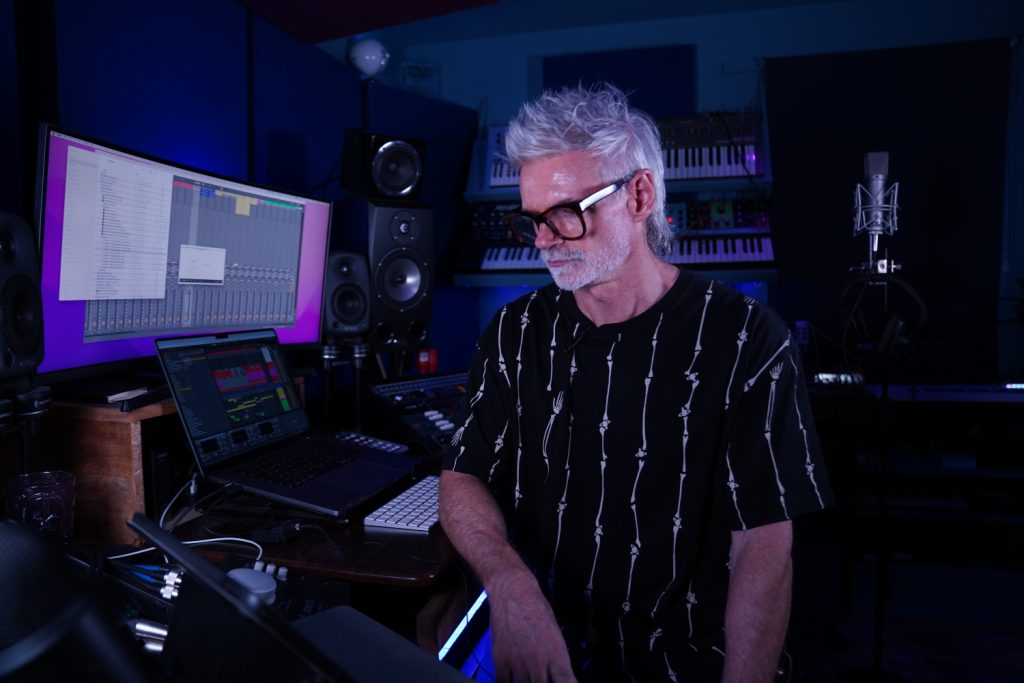
Having spent three decades pioneering club music, do you feel Angry Silhouette represents a reinvention or simply an expansion of your artistry?
I’d say Angry Silhouette represents both a reinvention and an expansion. After spending so many years in the world of club music, I felt like I had explored a lot of the territory within that space. But I’ve always been someone who wants to push boundaries and explore new sounds. So, in a way, this album feels like a reinvention because I’m stepping into a new territory, focusing more on emotion, vocals, and atmosphere rather than just the energy of the dancefloor.
At the same time, it’s an expansion of my artistry. It’s not like I’m leaving behind everything I’ve done — it’s more about broadening my approach. I’ve always been interested in songwriting and experimenting with different sounds, and Angry Silhouette is the natural evolution of that. It’s still me, but it’s a more personal and introspective side of my creativity that I haven’t fully explored before.
If you could perform Angry Silhouette live in any setting—be it a club, an intimate theatre, or a grand festival stage—what would be the ideal atmosphere?
If I had the chance to perform Angry Silhouette live, I think the ideal atmosphere would be something intimate yet immersive, like a theatre or a smaller, more atmospheric venue. I’d love the audience to really connect with the music on a deeper level, with the focus being more on the mood and the emotions of the album rather than just a big, high-energy performance. It would be great to create an environment where the visuals, lighting, and sound come together to enhance that cinematic, introspective vibe.
That being said, I wouldn’t rule out the energy of a larger stage, especially at a festival, where the crowd is more open to new experiences. But for this album, I think a more intimate, immersive setting would let the music shine in a way that would feel really special.
Follow RAZE.D:

